Duchesnea indica
Duchesnea indica
1. The products in our compound library are selected from thousands of unique natural products; 2. It has the characteristics of diverse structure, diverse sources and wide coverage of activities; 3. Provide information on the activity of products from major journals, patents and research reports around the world, providing theoretical direction and research basis for further research and screening; 4. Free combination according to the type, source, target and disease of natural product; 5. The compound powder is placed in a covered tube and then discharged into a 10 x 10 cryostat; 6. Transport in ice pack or dry ice pack. Please store it at -20 °C as soon as possible after receiving the product, and use it as soon as possible after opening.
Natural products/compounds from Duchesnea indica
- Cat.No. Product Name CAS Number COA
-
BCN9040
DL-α-Tocopherol10191-41-0
Instructions
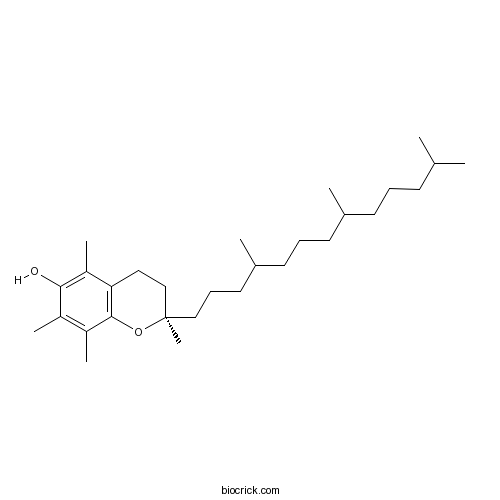
-
BCN5989
Fumaric acid110-17-8
Instructions
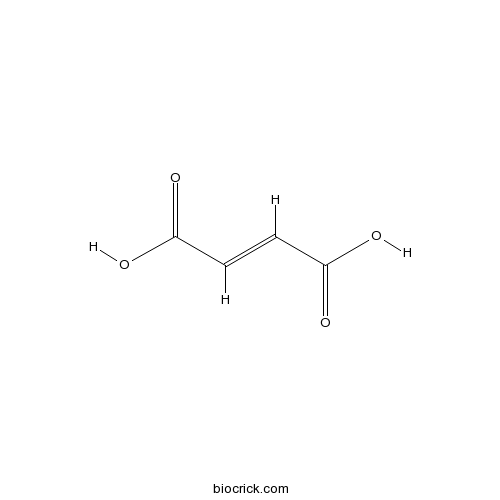
-
BCN2635
Lauric acid143-07-7
Instructions
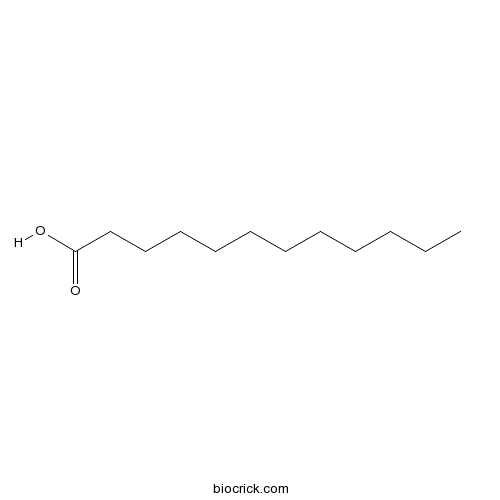
-
BCN1673
Phytol150-86-7
Instructions
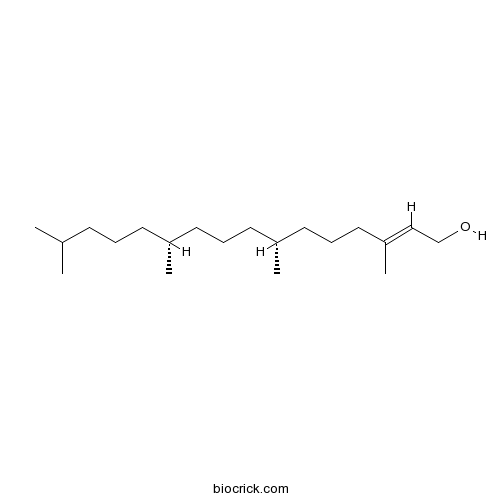
-
BCN1684
Rutin153-18-4
Instructions
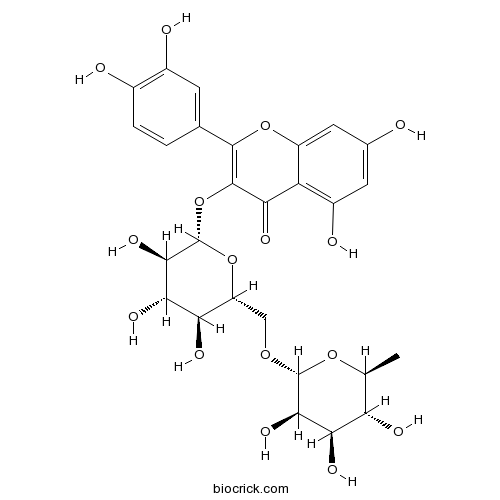
-
BCN7834
Clemaphenol A362606-60-8
Instructions
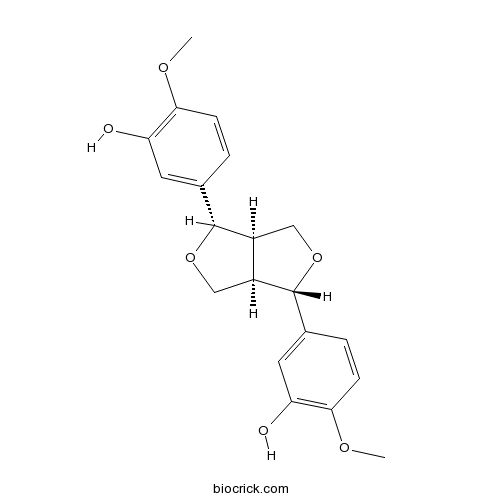
-
BCN5569
Isoquercitrin482-35-9
Instructions
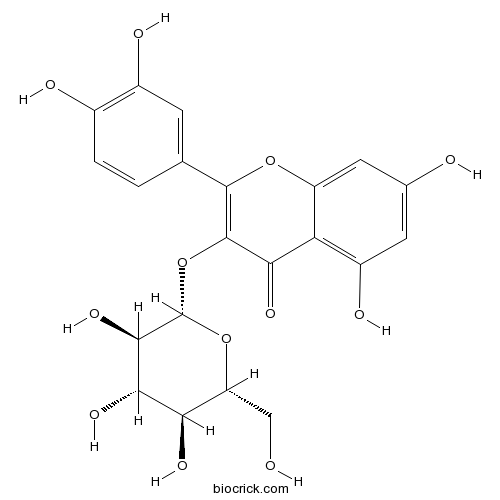
-
BCN5598
Kaempferide491-54-3
Instructions
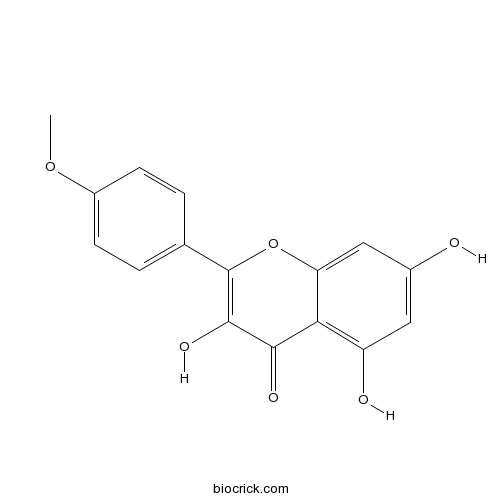
Duchesnea indica extract suppresses the migration of human lung adenocarcinoma cells by inhibiting epithelial-mesenchymal transition.[Pubmed: 28371048]
Epithelial-mesenchymal transition (EMT) is a process through which epithelial cells are transformed into mesenchymal cells; EMT diminishes cell polarity and cell-cell adhesion in cancer cells, leading to enhanced migratory and invasive properties. In this experiment, zymography, cell invasion, and migration assays were performed. Results indicated that Duchesnea indica extracts (DIE) inhibited highly metastatic A549 and H1299 cells by reducing the secretions of matrix metalloproteinase-2 and urokinase-type plasminogen activator. Cell adhesion assay also demonstrated that DIE reduced the cell adhesion properties. Western blot analysis showed that DIE down-regulated the expression of N-cadherin, fibronectin, and vimentin, which are mesenchymal markers, and enhanced that of E-cadherin, which is an epithelial marker. In vivo study showed that tumor growth was significantly reduced in BALB/c nude mouse xenograft model administered with oral gavage of DIE. Therefore, DIE could be exhibits potential as a phytochemical-based platform for prevention and treatment of lung cancer.
Biodiversity management of organic orchard enhances both ecological and economic profitability.[Pubmed: 27366643]
Organic farming has been regarded as an alternative solution for both agricultural sustainability and human health maintenance. Few researches have concentrated on the differences of biodiversity and eco-economic benefits between organic and conventional orchards. Organic management (OM) of orchards mainly includes taking advantage of natural enemies and beneficial weeds as well as soil organisms and controlling harmful pests. Here we conducted a three-year experiment on the effects of managing biodiversity in an organic apple orchard, using cattle manure to enrich soil biota, propagating native plant to suppress weeds and applying ecological pest management to control pests. The effect was assessed against the conventional management (CM) model. We found that OM enhanced soil organic carbon, total nitrogen, microbial biomass carbon and nitrogen. The 16S rDNA high-throughput sequencing results indicated that the dominant bacterial phyla of the top soil were Proteobacteria and Actinobacteria, and OM had richer bacteria diversity with a 7% higher Shannon's index than the CM. In particular, the relative abundance of rhizobium in the OM was higher than that of the CM. For OM, Duchesnea indica was an ideal ground-cover plant to control weeds through winning the niche competition and thus decreased weeds' Simpson, Shannon-Wiener and Pielou index by 38.2%, 53.8% and 16.9% separately. The phototactic pests' weight and scarab beetle's population were effectively decreased by 35% and 86% respectively through long time control and prevention. OM had an average of 20 times more earthworms than CM, and the maximum density had reached 369 m(-2) (0-20 cm soil). The dominant earthworm species of the OM were detritivores which preferring soil with high organic matter content. Due to no synthetic chemicals being used, the OM produced much safer apple fruits which were sold at high prices. Economically, up to a 103% increase of output-input ratio had been achieved in the OM. Our study clearly demonstrated that biodiversity management without chemical pollution increased the biodiversity of beneficial organisms, reduced antagonists of the fruit tree, and enhanced economic benefits of the apple orchard.
Phenolic Profiling of Duchesnea indica Combining Macroporous Resin Chromatography (MRC) with HPLC-ESI-MS/MS and ESI-IT-MS.[Pubmed: 26694333]
Duchesnea indica (D. indica) is an important traditional Chinese medicine, and has long been clinically used to treat cancer in Asian countries. It has been described previously as a rich source of phenolic compounds with a broad array of diversified structures, which are the major active ingredients. However, an accurate and complete phenolic profiling has not been determined yet. In the present work, the total phenolic compounds in crude extracts from D. indica were enriched and fractionated over a macroporous resin column, then identified by HPLC-ESI-MS/MS and ESI-IT-MS (ion trap MS). A total of 27 phenolic compounds were identified in D. indica, of which 21 compounds were identified for the first time. These 27 phenolic compounds encompassing four phenolic groups, including ellagitannins, ellagic acid and ellagic acid glycosides, hydroxybenzoic acid and hydroxycinnamic acid derivatives, and flavonols, were then successfully quantified using peak areas against those of the corresponding standards with good linearity (R² > 0.998) in the range of the tested concentrations. As a result, the contents of individual phenolic compounds varied from 6.69 mg per 100 g dry weight (DW) for ellagic acid to 71.36 mg per 100 g DW for brevifolin carboxylate. Not only did this study provide the first phenolic profiling of D. indica, but both the qualitative identification and the subsequent quantitative analysis of 27 phenolic compounds from D. indica should provide a good basis for future exploration of this valuable medicinal plant.
Extraction of crude polysaccharides from Duchesnea indica (Andrews) Focke: optimization by response surface methodology.[Pubmed: 25849714]
A full set of optimization procedure was applied to the extraction of anti-viral polysaccharides from Duchesnea indica (Andrews) Focke. By Plackett-Burman factorial design, three parameters (extraction time, extraction temperature, and ratio of water to raw material) were identified as significant to the extraction yield. However, no significant parameters had been identified for antiviral activity. A three-level-three-factor Box-Behnken factorial design was then employed to further optimize the extraction condition. The experimental data were fitted to a second-order polynomial equation using multiple regression analysis and also examined using appropriate statistical methods. This led to the construction of a response surface indicating the optimal values for each parameter and response studied. Concerning the extraction yield, an extraction at 98.51 ºC for 6.16 h with a ratio of water to raw material of 30.94 mL/g was found to be optimal. Under the optimized conditions, the experimental yield was 6.430 ± 0.078%, which was well matched with the predicted yield of 6.509%.
Report: screening of selected medicinal plants for their enzyme inhibitory potential - a validation of their ethnopharmacological uses.[Pubmed: 24811822]
In present study four medicinal plants namely Valeriana wallichii, Xanthium strumarium, Achyranthes aspera and Duchesnea indica belonging to different families were collected in Khyber Pakhtunkhwa province and crude extract and subsequent fractions were analyzed for their inhibitory potential against acetylcholinesterase, butyrylcholinesterase and α-glucosidase enzymes. Valeriana wallichii, Xanthium strumarium and Achyranthes aspera were significantly active against cholinesterases. Chloroform and ethylacetate fractions of Valeriana wallichii exhibited significant activity against acetylcholinesterase (IC50: 61μg/ml) and butyrylcholinesterase enzymes (IC50: 58μg/ml), respectively. Similarly ethylacetate fraction of Achyranthes aspera showed significant activity against acetylcholinesterase (IC50: 61 μg/ml) and butyrylcholinesterase enzymes (IC50: 61 μg/ml), respectively. In case of α-glucosidase enzyme, the chloroform fraction of Xanthium strumarium exhibited significant inhibitory activity (IC50: 72 μg/ml) as compared to the standard compound acarbose (IC50: 483 μg/ml). Duchesnea indica showed no such activities.
Evaluation of anti-inflammatory activity of selected medicinal plants of Khyber Pakhtunkhwa, Pakistan.[Pubmed: 24577927]
In present study, the anti-inflammatory potential of three medicinal plants, Xanthium strumarium, Achyranthes aspera and Duchesnea indica were evaluated, using both in vitro and in vivo assays. Carrageenan induced hind paw edema model was used to carry out the in vivo anti-inflammatory activity, while for in vitro screening lipoxygenase inhibition assay was used. Crude extract of all the selected plants depicted significant (plt;0.001) anti-inflammatory activity, at late phase of inflammation. Achyranthes aspera also showed considerable anti-inflammatory activity (47%) at relatively lower concentration (200 mg/ml), at the initial phase of inflammation. Similarly the ethyl acetate fraction of all the selected plants showed significant lipoxygenase inhibition activity when compared with the standard drug (Baicalein). The results obtained from both in vitro and in vivo anti-inflammatory activity suggest that the ethyl acetate fraction of the crude extract of all the selected plants can be used for the isolation of new lead compounds with better anti-inflammatory activity.
Spatial heterogeneity in light supply affects intraspecific competition of a stoloniferous clonal plant.[Pubmed: 22720041]
Spatial heterogeneity in light supply is common in nature. Many studies have examined the effects of heterogeneous light supply on growth, morphology, physiology and biomass allocation of clonal plants, but few have tested those effects on intraspecific competition. In a greenhouse experiment, we grew one (no competition) or nine ramets (with intraspecific competition) of a stoloniferous clonal plant, Duchesnea indica, in three homogeneous light conditions (high, medium and low light intensity) and two heterogeneous ones differing in patch size (large and small patch treatments). The total light in the two heterogeneous treatments was the same as that in the homogeneous medium light treatment. Both decreasing light intensity and intraspecific competition significantly decreased the growth (biomass, number of ramets and total stolon length) of D. indica. As compared with the homogeneous medium light treatment, the large patch treatment significantly increased the growth of D. indica without intraspecific competition. However, the growth of D. indica with competition did not differ among the homogeneous medium light, the large and the small patch treatments. Consequently, light heterogeneity significantly increased intraspecific competition intensity, as measured by the decreased log response ratio. These results suggest that spatial heterogeneity in light supply can alter intraspecific interactions of clonal plants.
Metal analysis, phytotoxic, insecticidal and cytotoxic activities of selected medicinal plants of Khyber Pakhtunkhwa.[Pubmed: 22186309]
In the present study four medicinal plants traditionally used in Pakistan for treatment of various ailments were evaluated for their heavy metals content, insecticidal, cytotoxic and phytotoxic actions. The metals like Cr, Cu, Zn, Mn, Ni, Pb, Fe and Co were determined in crude extract and various fractions. Soil samples were also tested for heavy metals to determine assimilation of any metal by the plant. Lead, Chromium, copper, nickel and cobalt exceeded the permissible limit in most of the tested samples while the concentration of zinc, manganese and iron was within the permissible limit. Chloroform fraction from Achyranthes aspera and ethyl acetate fraction from Duchesnea indica showed significant phytotoxic activities. Crude extract and chloroform fraction from Xanthium strumarium showed insecticidal activity comparable to that of permethrin and thus could be a significant source of natural insecticide. The butanol fraction from X. strumarium showed significant cytotoxicity with LC(50) 1.9306 μg/ml, having mortality rate 93% at highest dose, while the crude extract from Valeriana wallichii showed 90% mortality rate (LC(50) 4.9730 μg/ml) at highest dose. However, the extracts from other plants were not effective against the brine shrimps tested.


